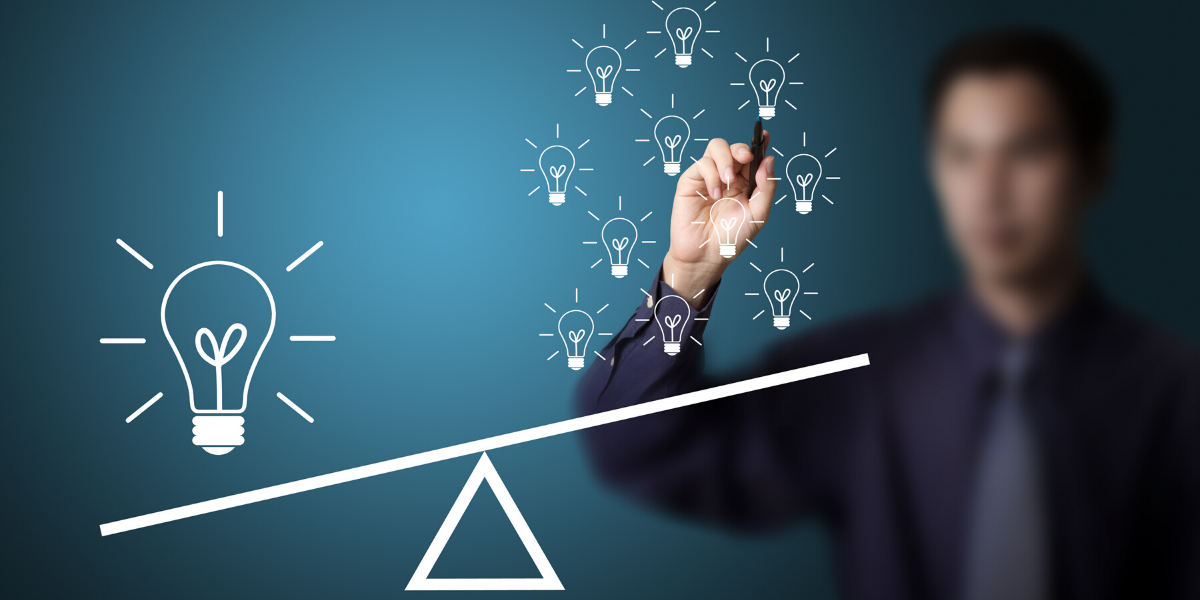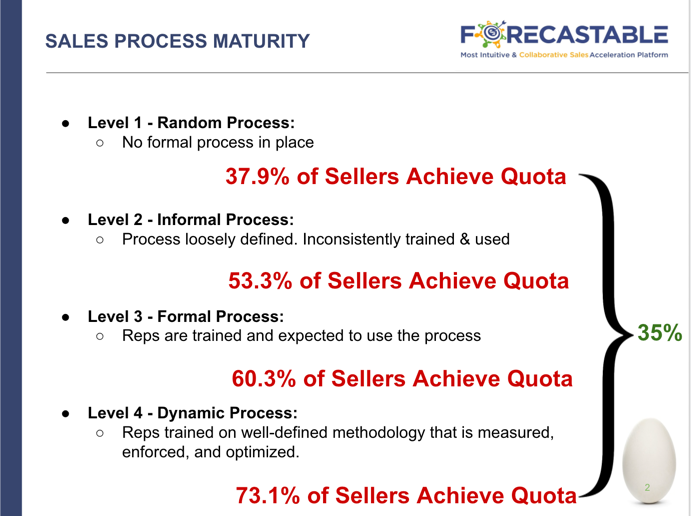*Sales Process:* How to Overcome the Level Playing Field That Is the B2B Buyer’s Journey

Over the course of the last decade, there’s been a lot of focus, in general, on the B2B Buyer’s Journey (similar to the marketing funnel, by definition, but we’ll cover that another time) and how we need to create personalized experiences at each stage of the journey so we can systematically guide the buyer down the path towards a purchase.
As marketers began tailoring their activities and content based on what stage the prospect was in the journey, companies began developing marketing technologies to support those marketers’ efforts at each stage. Over time, more and more technologies came out to support those efforts and in just an eight-year period, we went from 150 marketing technologies to over 7,000. Scott Brinker’s Marketing Technology Landscape is a great representation of this evolutionary tale. This is the 2019 infographic (FYI – there’s 7,000 logos, so it’s not so easy on the eyes):
”
SO, YOU MEAN TO TELL ME THAT IN THE UNITED STATES, WE’RE SPENDING OVER A TRILLION MARKETING DOLLARS ON GUIDING PEOPLE THROUGH THE FIRST TWO STAGES OF THE BUYER’S JOURNEY AND THEN 81.3% OF THE TIME WE’RE TURNING THAT LEAD OVER TO A SALES PERSON WHO ISN’T FULLY EQUIPPED TO BRING THE BUSINESS TO A SUCCESSFUL CLOSE?
So, you mean to tell me that in the United States, we’re spending over a Trillion marketing dollars on guiding people through the first two stages of the buyer’s journey and then 81.3% of the time we’re turning that lead over to a sales person who isn’t fully equipped to bring the business to a successful close?
But, what does that mean and how do sales organizations figure out where they stand so they can begin making incremental improvements?
Well, there are four levels of sales process maturity:
- Level 1 – Random Process: No formal sales methodology in place.
- Level 2 – Informal Process: Process loosely defined. Inconsistently trained and used.
- Level 3 – Formal Process: Reps are trained and expected to use the methodology.
- Level 4 – Dynamic Process: Reps are trained on a well-defined methodology that’s regularly measured, enforced, and optimized
According to CSO Insights, the independent research arm of the Miller Heiman Group, there’s a direct correlation between a sales organization’s sales process maturity and the percentage of sales reps that achieve quota. As an example, if a company were to improve from a Level 1 to a Level 4, they can expect to see an increase in sales reps achieving quota by roughly 35%:

”
IN FACT, SALES PROCESS IS ONE OF THE FEW REMAINING AREAS WHERE COMPANIES CAN TRULY DIFFERENTIATE THEMSELVES AS PART OF THEIR GO-TO-MARKET STRATEGY.
As you saw earlier, there are over 7,000 marketing technologies and all kinds of best practices around delivering the best possible customer experience during the first two stages of the buyer’s journey. This portion of the journey is a level playing field in the B2B landscape. As an example, let’s take a look at Forecastable for a second. We’re a startup. We have one of the most sophisticated marketing technology stacks money can buy and we were able to put our technology in place in less than three months. What does that say?
It says that modern B2B organizations need to stop competing on a level playing field and start outselling their competition. Getting to a Level 4 Dynamic Process should be the goal of every B2B sales organization, but it’s not something that’s simple and easy to implement on your own. Solving for this challenge is the sole purpose of Forecastable’s existence.
Whenever we engage a sales organization, our first order of business is to determine where they rank in terms of sales process maturity. We then help them determine the sales process they should establish and provide them with world-class technology that allows sales leaders and sales enablement personnel to help put individual sellers on a better path towards a better year, all while not interrupting sellers’ daily routines with unnecessary activities and processes.
PARTNER CO-SELLING IS NOTHING MORE THAN SALES PROCESS — IT REALLY IS A SCIENCE!
The reason why so many technologies are able to thrive is because there’s a lot of Marketing budget out there and 67% of the buyer’s journey is done digitally. The average B2B marketing budget in the United States is approximately 11% of revenue, which equates to a little over a Trillion marketing dollars. Those hard-earned marketing dollars are spent capturing the attention of potential buyers and guiding them through the three stages of the buyer’s journey, which are:
- Awareness Stage: The buyer realizes they have a problem
- Consideration Stage: The buyer defines their problem and researches options to solve it.
- Decision Stage: The buyer chooses a solution.
What’s interesting though is that according to the Miller Heiman group, only 3% of B2B buyers want to make their purchase online. This means that 97% of B2B buyers will need to engage with a sales rep. If that many people are having to speak with a sales rep, then why is it that 81.3% of sales organizations don’t have a formal sales methodology in place that’s measured, enforced, or optimized?

”
SO, YOU MEAN TO TELL ME THAT IN THE UNITED STATES, WE’RE SPENDING OVER A TRILLION MARKETING DOLLARS ON GUIDING PEOPLE THROUGH THE FIRST TWO STAGES OF THE BUYER’S JOURNEY AND THEN 81.3% OF THE TIME WE’RE TURNING THAT LEAD OVER TO A SALES PERSON WHO ISN’T FULLY EQUIPPED TO BRING THE BUSINESS TO A SUCCESSFUL CLOSE?
So, you mean to tell me that in the United States, we’re spending over a Trillion marketing dollars on guiding people through the first two stages of the buyer’s journey and then 81.3% of the time we’re turning that lead over to a sales person who isn’t fully equipped to bring the business to a successful close?
But, what does that mean and how do sales organizations figure out where they stand so they can begin making incremental improvements?
Well, there are four levels of sales process maturity:
- Level 1 – Random Process: No formal sales methodology in place.
- Level 2 – Informal Process: Process loosely defined. Inconsistently trained and used.
- Level 3 – Formal Process: Reps are trained and expected to use the methodology.
- Level 4 – Dynamic Process: Reps are trained on a well-defined methodology that’s regularly measured, enforced, and optimized
According to CSO Insights, the independent research arm of the Miller Heiman Group, there’s a direct correlation between a sales organization’s sales process maturity and the percentage of sales reps that achieve quota. As an example, if a company were to improve from a Level 1 to a Level 4, they can expect to see an increase in sales reps achieving quota by roughly 35%:

”
IN FACT, SALES PROCESS IS ONE OF THE FEW REMAINING AREAS WHERE COMPANIES CAN TRULY DIFFERENTIATE THEMSELVES AS PART OF THEIR GO-TO-MARKET STRATEGY.
As you saw earlier, there are over 7,000 marketing technologies and all kinds of best practices around delivering the best possible customer experience during the first two stages of the buyer’s journey. This portion of the journey is a level playing field in the B2B landscape. As an example, let’s take a look at Forecastable for a second. We’re a startup. We have one of the most sophisticated marketing technology stacks money can buy and we were able to put our technology in place in less than three months. What does that say?
It says that modern B2B organizations need to stop competing on a level playing field and start outselling their competition. Getting to a Level 4 Dynamic Process should be the goal of every B2B sales organization, but it’s not something that’s simple and easy to implement on your own. Solving for this challenge is the sole purpose of Forecastable’s existence.
Whenever we engage a sales organization, our first order of business is to determine where they rank in terms of sales process maturity. We then help them determine the sales process they should establish and provide them with world-class technology that allows sales leaders and sales enablement personnel to help put individual sellers on a better path towards a better year, all while not interrupting sellers’ daily routines with unnecessary activities and processes.




